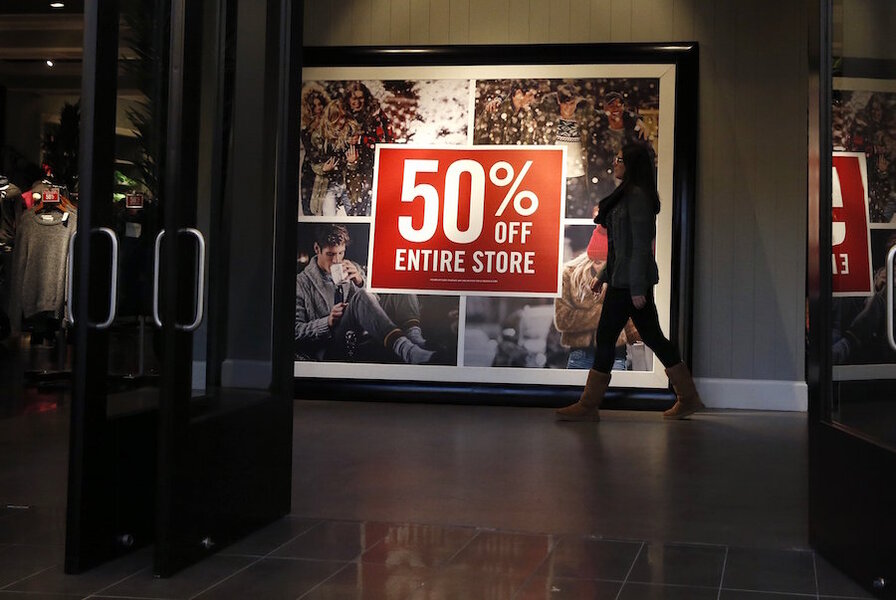Abercrombie & Fitch is back. Sort of.
Loading...
Abercrombie & Fitch may finally be finding its footing again.
On Wednesday, the clothing brand posted its first same store sales gain in three years and earnings of $1.08 a share, ahead of expected earnings of $0.99 per share. Net sales also grew more than expected, to $1.11 billion. Abercrombie stocks are now trading up, at $29.50 a share.
"Our results for the fourth quarter reflect continued progress on a number of fronts,” Arthur Martinez, Abercrombie Executive Chairman, said in a statement. “While we accomplished a lot, there is much more progress we need to make to fulfill the potential of our brands.”
It’s been a rough few years for the brand, which enjoyed wide popularity in the late 1990s and early 2000s. Consumers have moved away from its edgy advertisements and logo-laced clothes over the past decade.
The company has faced weak sales, and controversy, for years. In 2014, CEO Mike Jeffries retired from the company and its board of directors. His 20-year tenure helped build the company into a brand for “cool” teenagers and young adults. But in 2013, Mr. Jeffries came under fire for implying that plus-size people are unwelcome at the store, thereby suggesting that that fun-loving, risqué image was meant only for certain individuals.
Abercrombie has also been dogged by hiring discrimination lawsuits. In 2004, the company settled a class-action lawsuit that charged it used discriminatory hiring practices against minority candidates. In 2015, the Supreme Court ruled in favor of a Muslim woman who had sought a job at an Abercrombie in Oklahoma, but was denied employment because of her hijab.
Jeffries’ 2014 retirement sent Abercrombie stocks sliding. Abercrombie immediately began to restructure, focusing on offering a consistent brand message. In order to unify its upper-level management, Abercrombie created six new positions in 2015 that organized its executives around the brand, rather than individual products. Those moves helped the company regain some ground among investors.
Abercrombie’s marketing strategy has shifted just as drastically as its management structure. In a departure from the highly sexualized ad campaigns that were the brand's trademark, Abercrombie now requires its models to wear shirts, and has de-emphasized the models' physical appearance as a lure for selling clothes.
It has also started to shift the way it hires workers, no longer calling them "models."
Abercrombie’s clothing offerings have also started to evolve, too. It has substantially reduced inventory emblazoned with its once-prized logo in favor of more modern and subdued looks. This is a direct push to try and regain consumers who flocked to cheaper apparel stores like Forever 21, Zara, and H&M while Abercrombie was on the outs.
Abercrombie isn’t out of the woods yet, but after years of stumbles, the brand may finally be on a more even keel.
“As we look ahead to 2016, it is likely to remain a challenging environment, but we believe we are on the right track,” Martinez said. “We will continue to focus on delivering a customer-centric shopping experience and compelling assortments based on clearly defined brand positions."








